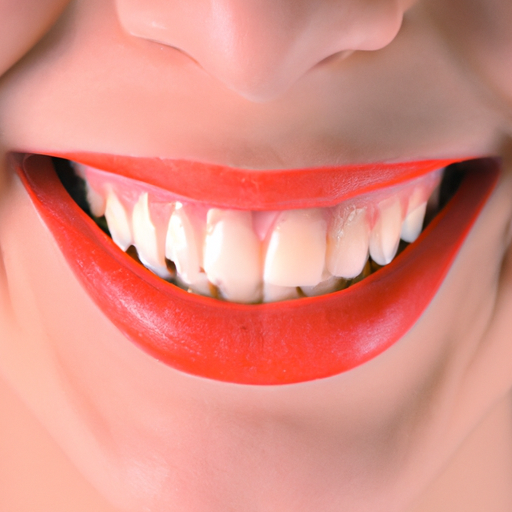Maintaining good oral health is crucial for overall well-being, and one of the most common dental problems that people face is dental caries, also known as tooth decay. Dental caries can cause pain, discomfort, and even tooth loss if left untreated. In this article, we will explore the causes, symptoms, and diagnosis of dental caries, as well as effective treatment options to restore oral health. Additionally, we will delve into the importance of prevention and provide tips and strategies to avoid dental caries altogether. By understanding the nature of dental caries and taking proactive measures, we can ensure a healthy and radiant smile for years to come.
1. "Understanding Dental Caries: Causes, Symptoms, and Diagnosis"
Dental caries, commonly known as tooth decay or cavities, is a prevalent oral health issue affecting people of all ages. Understanding the causes, symptoms, and diagnosis of dental caries is crucial for preventing and effectively treating this condition.
Causes:
Dental caries is primarily caused by the interaction between bacteria in the mouth and the sugars and starches present in the food we consume. When we eat sugary or starchy foods, bacteria in dental plaque convert these carbohydrates into acids. The acids, along with the bacteria, food debris, and saliva, form plaque, a sticky film that adheres to teeth. Over time, the acids produced by plaque attack the tooth enamel, leading to demineralization and the formation of cavities.
Symptoms:
The symptoms of dental caries vary depending on the severity and location of the decay. In the early stages, individuals may not experience any noticeable symptoms. However, as the condition progresses, the following symptoms may occur:
1. Tooth sensitivity: Sensitivity to hot, cold, sweet, or acidic foods and drinks.
2. Toothache: Persistent or intermittent pain in the affected tooth.
3. Visible holes or pits: Cavities may appear as dark spots or holes on the tooth surface.
4. Tooth discoloration: White, brown, or black spots may develop on the enamel.
5. Bad breath: Bacteria and food debris trapped in the cavities can cause unpleasant breath odor.
Diagnosis:
Dental caries can be diagnosed through a comprehensive dental examination performed by a dentist or dental hygienist. The diagnostic process generally involves the following:
1. Visual examination: The dentist inspects the teeth and looks for visible signs of decay, such as cavities, discoloration, or rough edges.
2. Dental probes and explorers: These instruments are used to check for soft areas on the tooth surface that may indicate decay.
3. X-rays: Dental X-rays provide a more detailed view of the teeth, allowing the dentist to detect cavities between the teeth or beneath the enamel.
4. Laser fluorescence cavity detection: This modern technique uses a special laser device to measure the fluorescence within the tooth
2. "Effective Treatment Options for Dental Caries: From Fillings to Root Canals"
Dental caries, commonly known as tooth decay, is a prevalent oral health issue that affects people of all ages. If left untreated, it can lead to severe pain, tooth loss, and even systemic health complications. Therefore, identifying effective treatment options for dental caries is crucial in managing and preventing further progression of the disease.
1. Fillings: The most common treatment for dental caries is the placement of dental fillings. This procedure involves removing the decayed portion of the tooth and filling the resulting cavity with a material such as amalgam, composite resin, or porcelain. Fillings not only restore the tooth’s functionality but also prevent further decay by sealing off the affected area.
2. Dental Crowns: In cases where dental caries has caused significant damage or weakened the tooth structure, a dental crown may be recommended. A crown is a custom-made cap that covers the entire visible portion of the tooth, protecting it and restoring its strength and appearance. Crowns are typically made from materials like porcelain, metal alloys, or a combination of both.
3. Root Canal Therapy: When dental caries progresses to the point where it reaches the tooth’s pulp, root canal therapy becomes necessary. This treatment involves removing the infected or inflamed pulp, disinfecting the root canals, and sealing them to prevent further infection. Once the root canal is completed, a dental crown is often placed to protect and strengthen the treated tooth.
4. Dental Implants: In cases where dental caries has caused tooth loss, dental implants offer a reliable and long-lasting solution. An implant is a titanium post that is surgically placed into the jawbone, acting as an artificial tooth root. Once the implant integrates with the bone, a dental crown is attached to replace the missing tooth. Dental implants not only restore the aesthetics and functionality of the smile but also help maintain the integrity of the jawbone.
5. Fluoride Treatments: For early-stage dental caries or to prevent further decay, fluoride treatments can be effective. Fluoride, a naturally occurring mineral, helps remineralize weakened tooth enamel and makes it more resistant to acid attacks. These treatments can be administered in the
3. "Prevention is Key: Tips and Strategies to Avoid Dental Caries"
Prevention is Key: Tips and Strategies to Avoid Dental Caries
While dental caries, commonly known as tooth decay, is a prevalent oral health issue, it is largely preventable. By adopting a proactive approach towards maintaining good oral hygiene and making smart lifestyle choices, individuals can significantly reduce their risk of developing dental caries. Here are some valuable tips and strategies to help you prevent dental caries and maintain a healthy smile:
1. Brush and floss regularly: The foundation of good oral hygiene lies in brushing your teeth at least twice a day and flossing once a day. Use a fluoride toothpaste and a soft-bristled toothbrush to effectively remove plaque and bacteria from all surfaces of your teeth. Flossing helps reach the areas between teeth where a toothbrush cannot reach, preventing the buildup of plaque and reducing the risk of dental caries.
2. Use fluoride products: Fluoride is a natural mineral that strengthens tooth enamel, making it more resistant to acid attacks from bacteria. Ensure that your toothpaste, mouthwash, and drinking water contain fluoride. Fluoride treatments at the dental office can also provide additional protection against dental caries, especially for individuals at higher risk.
3. Maintain a balanced diet: A diet that is rich in sugary and acidic foods and beverages can contribute to dental caries. Limit your consumption of sugary snacks, carbonated drinks, and fruit juices, as they provide a favorable environment for bacteria to produce acids that attack tooth enamel. Instead, choose nutritious foods such as fruits, vegetables, dairy products, and lean proteins that promote oral health.
4. Limit snacking and sugary treats: Frequent snacking throughout the day exposes your teeth to prolonged acid attacks. If you do snack, opt for healthier options like nuts, cheese, or crunchy fruits and vegetables that stimulate saliva flow, which helps neutralize acids and remineralize tooth enamel. Moreover, avoid sticky candies and sweets that cling to your teeth, as they can increase the risk of dental caries.
5. Drink water and chew sugar-free gum: Drinking water regularly throughout the day helps wash away food particles and bacteria, promoting saliva production. Saliva


